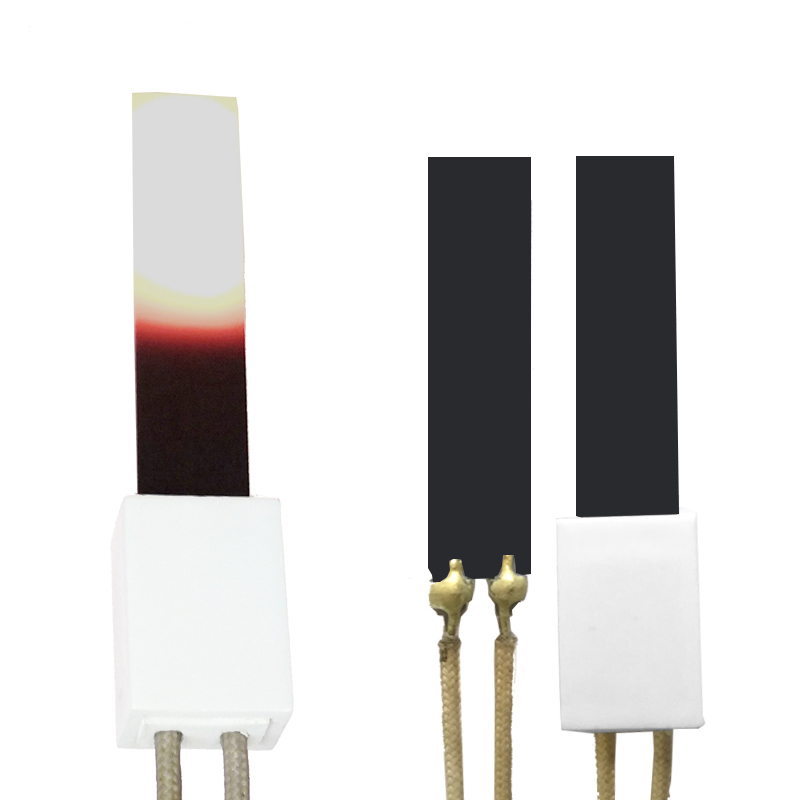How Do You Know If Your Hot Surface Igniter Is Bad
2025-09-30
I’ve been in the HVAC industry for longer than I care to admit, and over the years, one question I hear more than any other from diligent homeowners is this: How do you know if your Hot Surface Igniter is the real culprit behind a furnace that refuses to fire up? You’re left in the cold, listening to the fan blow but feeling no heat, and that frustration is all too familiar.
A failing Hot Surface Igniter is one of the most common reasons for a furnace lockdown. Unlike the old pilot lights, this component is a sophisticated piece of silicon nitride or silicon carbide that literally glows bright orange to light the gas. When it weakens or fails, the furnace's safety system won't allow gas to flow, leaving you in the cold. Let’s walk through, step-by-step, how you can diagnose this issue like a pro.
What Are The Telltale Signs Your Hot Surface Igniter Is Failing
You don’t need to be a certified technician to spot the red flags. Most of the symptoms are pretty straightforward if you know what to look for. Here are the most common indicators that your Hot Surface Igniter might be calling it quits.
-
The Furnace Blows Cold Air This is the number one complaint. You hear the furnace start up, the blower kicks in, but the air coming from your vents is stubbornly cold. This often means the furnace is going through its startup sequence, but the igniter isn't getting hot enough to prove to the control board that it's safe to open the gas valve.
-
The Furnace Short Cycles Does your furnace seem to start up for a few moments, then shut down, only to try again a few minutes later? This short-cycling is a classic symptom. The system is attempting to ignite but isn't receiving the confirmation it needs from the glowing Hot Surface Igniter, so it aborts the process for safety.
-
No Glow From The Igniter This one requires you to be safe and careful. If you remove the front access panel (with the power OFF, then turn it back on), you should see the igniter glow a vibrant, bright orange within a minute of the thermostat calling for heat. If it's dark, or only glowing faintly or in one spot, it's likely failing.
-
Visible Damage To The Component Over time, Hot Surface Igniters become brittle. If you inspect it, you might see cracks, chips, or a warped shape. Even the oils from your skin can create a hot spot on the igniter when it heats up, causing it to fail prematurely.
How Can You Be Sure It Is The Hot Surface Igniter And Not Something Else
Diagnosis is about eliminating other possibilities. A faulty Hot Surface Igniter often gets blamed for problems caused by other components. Let’s be sure we’re pinpointing the right part. Here is a quick diagnostic table to help you differentiate.
| Symptom | If it's the Hot Surface Igniter | If it's Another Common Issue (e.g., Flame Sensor) |
|---|---|---|
| Furnace blows cold air | The igniter does not glow, or glows weakly and then the system shuts down. | The igniter glows brightly, gas valve opens, burner lights, but then shuts off after a few seconds. |
| System short-cycles | The cycle stops before you ever see a gas flame. | The cycle stops after the gas flame has lit for a few moments. |
| Control Board Error Code | Many modern furnaces will flash a code specifically for "igniter failure" or "no ignition." | May flash a code for "flame failure" or "flame sensed when none present." |
What Should You Look For When Replacing A Faulty Hot Surface Igniter
Once you’ve confirmed your Hot Surface Igniter is bad, the next step is choosing a replacement. This isn’t a part where you should just pick the cheapest option. A quality igniter is the heart of your furnace’s ignition system. This is where the engineering behind a brand like Torbo® makes a world of difference.
We designed the Torbo® Titan Igniter Series with durability and performance as the top priorities. Not all igniters are created equal. Here’s a breakdown of the key parameters that define a superior product.
Key Specifications of the Torbo® Titan Igniter Series
-
Material Our igniters are crafted from premium Silicon Nitride, offering superior thermal shock resistance and a longer operational lifespan compared to older carbide models.
-
Voltage Standard 120V operation, ensuring compatibility with the vast majority of modern forced-air furnace systems.
-
Resistance A stable 35-55 Ohms range, which is critical for drawing the correct amperage and ensuring a consistent, hot glow without straining the control board.
-
Time to Glow Reaches optimal ignition temperature in under 30 seconds, reducing the wait time for heat and system strain.
-
Average Lifespan Rated for 7,000+ ignition cycles, significantly outperforming many generic brands that may only last 3,000-5,000 cycles.
-
Warranty Backed by a 5-year limited warranty, a testament to our confidence in its reliability.
To make comparing easier, here is a direct comparison between a generic part and the Torbo® standard.
| Feature | Generic Igniter | Torbo® Titan Igniter |
|---|---|---|
| Material | Lower-grade Silicon Carbide | High-Purity Silicon Nitride |
| Thermal Shock Resistance | Standard | Exceptional |
| Guaranteed Lifespan | ~3-5 Years | 7+ Years |
| Warranty | Often 1 year or less | 5-Year Limited Warranty |
| Packaging | Basic plastic clamshell | Anti-static, labeled packaging for safe storage |
Your Hot Surface Igniter Questions Answered
I’ve spent years on technical support lines and in forums, and certain questions come up again and again. Here are the answers to some of the most frequent queries.
Can I clean a Hot Surface Igniter to make it work again
It is generally not recommended. Hot Surface Igniters are extremely fragile, and any physical contact can cause micro-fractures. Using a cleaner can leave a residue that creates hot spots, leading to premature failure. The safest approach is replacement with a reliable part like the Torbo® Titan.
Why does my new Hot Surface Igniter keep burning out so quickly
This is a frustrating but common issue. The most likely cause is improper handling during installation. The oils from your skin can transfer to the surface, causing uneven heating. Always wear clean gloves when handling a new Hot Surface Igniter. Another possibility is an underlying issue with the furnace's voltage supply.
Is it safe to test a Hot Surface Igniter myself
If you are comfortable with a multimeter and follow strict safety protocols (turning off power and gas), you can perform a basic resistance check. A healthy Hot Surface Igniter will typically show a resistance between 35 and 110 ohms, depending on the model. An infinite reading (open circuit) means it's broken, and a very low reading means it's shorted. If you are unsure at any point, it is always best to call a professional.
Dealing with a faulty Hot Surface Igniter can be more than just an inconvenience; it's a matter of your home's safety and comfort. While understanding the problem is the first step, solving it with the right part is what truly matters. Don't settle for a component that might fail you again next season. Insist on the engineered reliability and extended lifespan that Torbo® provides.
Your family's warmth shouldn't be left to chance.
Contact us today to find a certified installer near you or to learn more about the full specifications of the Torbo® Titan Igniter Series. Let our expertise be the solution to your heating challenges.




